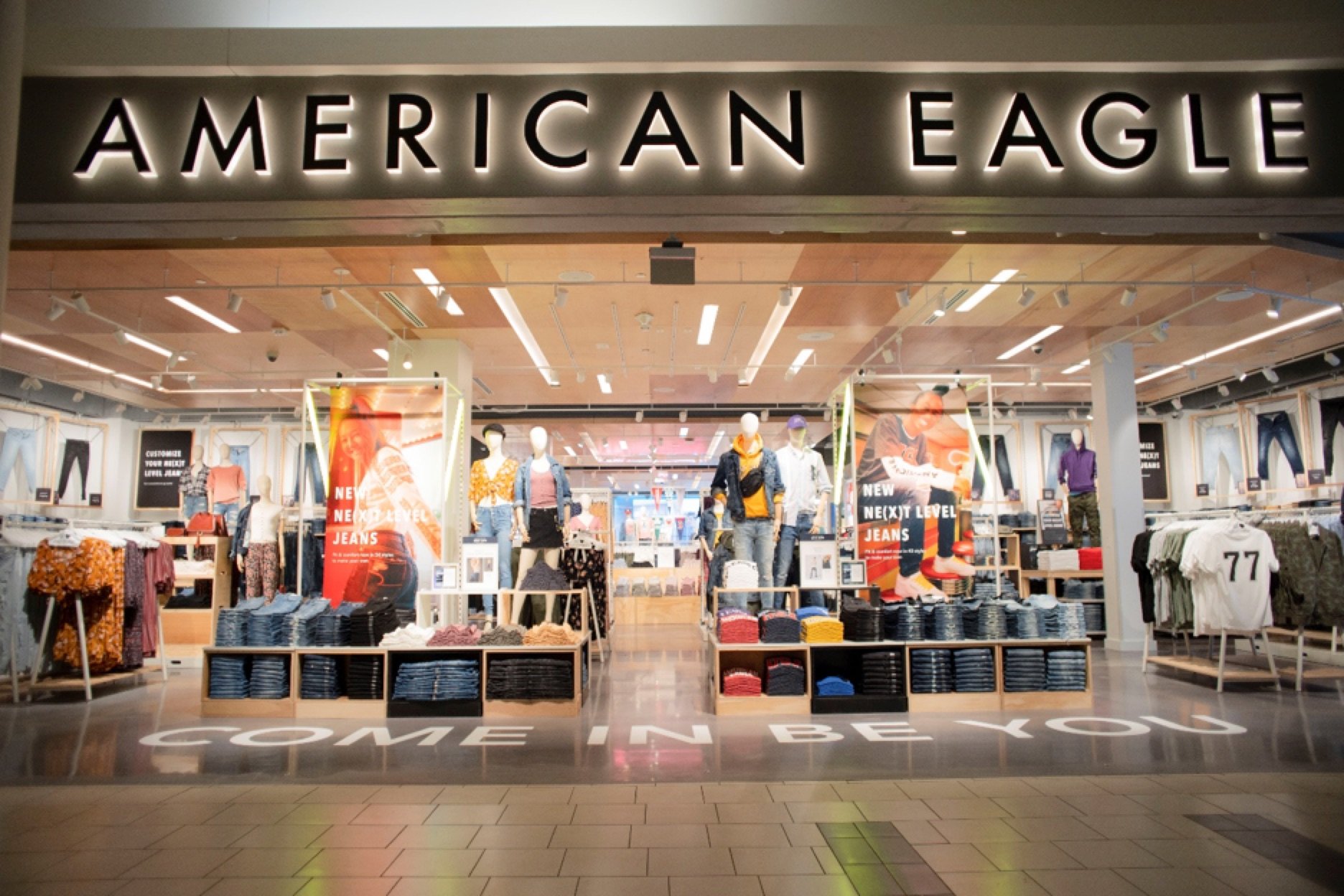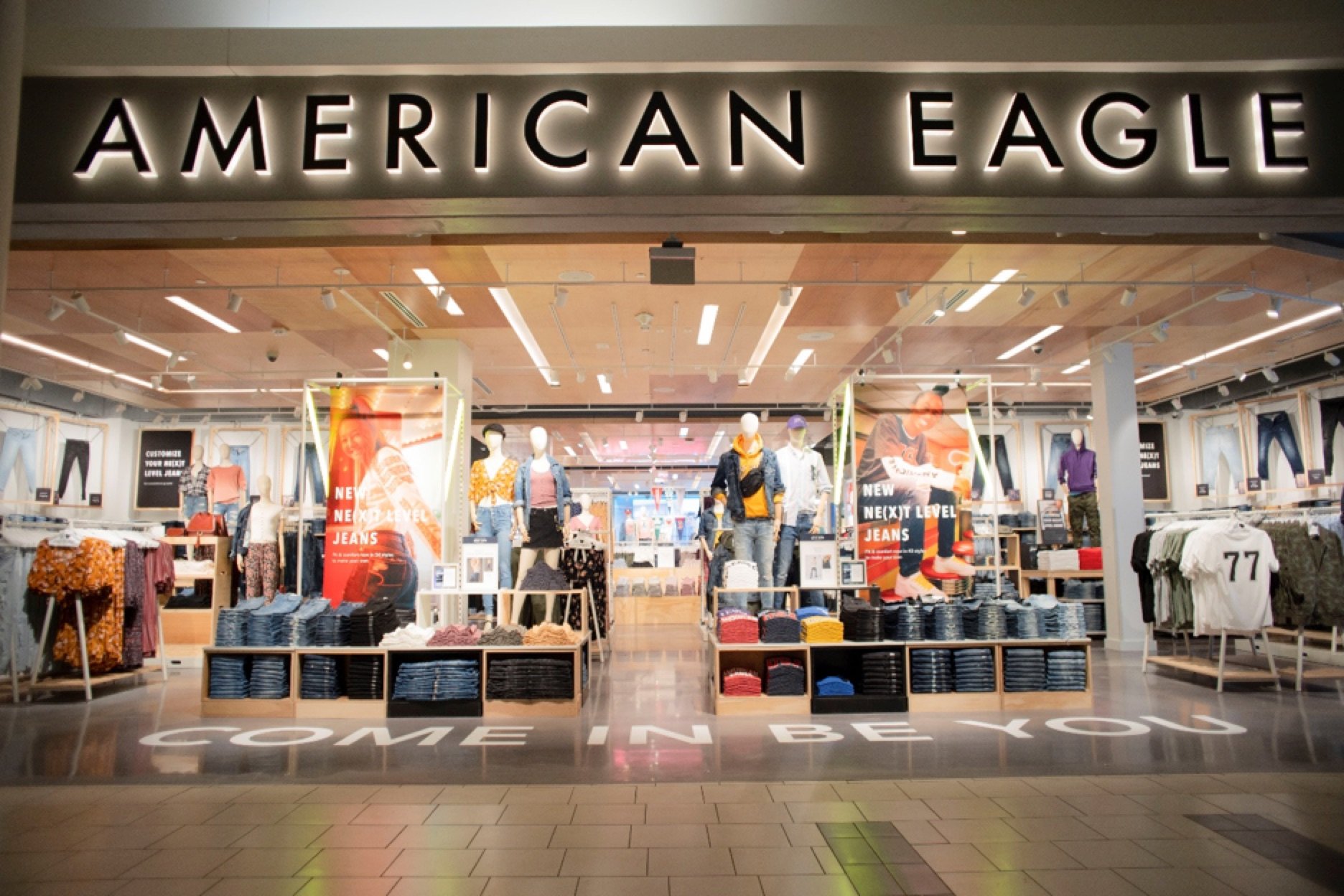Everyone look to your right. Now look to your left. In a few years, one of these companies will be dead. The standard grad school introduction -- replace "dead" with "out of the program" -- works equally well with some of today's smaller apparel retailers. In a world dominated by multibillion-dollar companies, these smaller players are just scraping by, hoping to make it from this year to the next. Here are two of the weaker students, and a look at their long-term chances.
The players
Today's coincidental theme is "American." American Apparel (NYSEMKT: APP) and American Eagle (AEO 2.21%) are both working to get a bigger piece of the pie from the big retailers, and both are having a difficult time doing so. American Apparel is the smaller of the two, with a market cap of just $140 million. American Eagle is the larger, with a market cap of $4 billion and yearly revenue over $3 billion. To give some context to those numbers using a familiar measuring stick, Gap's (GPS 2.87%) market cap is $15.5 billion.
The reason I'm considering these two is that I think they both have a solid customer base, but neither of them seems to have great plans for the next five years. A friend of mine once attended a meeting wherein a sales manager, when asked what his plan for next year was, paused to think and then responded, "To grow." That's not a plan; that's a vague goal. Both of these companies strike me as wanting to grow, but without much clarity as to what that means.
American Apparel
American Apparel has lived most of its life on these sorts of lists -- ones that wonder when a company will die. In part, that's because it's such a small operation. Designer Ralph Lauren -- the person, not company -- could buy the majority of American Apparel with one year's worth of his salary. But last year, the company finished up strong, with comparable sales in November and December up more than 12%. The December result was the single best sales month in the company's history, which bodes well. For all of 2012, American Apparel's comparable sales were up 15%, putting it well ahead of Gap, which had a comparable sales increase in the low single digits over 2012.
In its most recent earnings call, American Apparel's management team highlighted the work that it has been performing recently. The main goal has been to reduce inventories to make the company a more efficient machine. CEO Dov Charney said: "We continue to make meaningful progress in improving inventory efficiency with a 5% reduction in unit inventory in this quarter. This brings our total unit reduction to over 18% since we began this undertaking in 2011."
Going back to my earlier complaint about the lack of a plan, it's not fair to say that American Apparel has no plan -- the plan is to increase operational efficiency. That's going to help the company free up capital for marketing and expansion, which is great for investors. The obvious danger with American Apparel is that it doesn't have the resources to really ramp up production if the need arises. These first few steps have been positive, but I'd wait at least until the year-end earnings release before I jumped in.
American Eagle
Compared with American Apparel, which had an operating margin of 3% last quarter, American Eagle is doing better operationally. Last quarter, its operating margin came in at 14%. Looking back at our yardstick, Gap's operating margin was 13%, so American Eagle isn't just doing better; it's doing well.
Unfortunately, comparable sales have hit the brakes. Through the beginning of January, the company's comparable sales had increased 5% for the quarter. That's an 8-percentage-point drop from the year before and a 5-point drop from the previous quarter. So if American Apparel has a plan for its operations problem, what's American Eagle's plan?
"Fortification" is the term that management used on the last call. Basically, the company sees that it needs to remodel its stores, close the underperforming ones, and get trendy items to its stores faster. That will help it jump on fashion bandwagons and should cut down on the amount of merchandise that it later has to discount. It's also making a wise omnichannel investment thast will allow customers to better interact with its online store while in a physical store. That's already paid off, as online comparable sales have been a big driver of the overall sales increase.
Compared with American Apparel, American Eagle seems like a safe bet. But with comparable sales dropping, I'm worried that, even with all its remedies and renovations, it's not doing a good enough job of making things that people love. With its P/E just over the apparel sector average, I'm not sure that the cost justifies the potential benefit.
The bottom line
Between American Eagle and American Apparel, the choice is clear: I choose Gap. Gap has undertaken a fabulous turnaround in the past year, and it recently purchased Intermix. That high-end boutique is going to add a whole new dimension to the company's business, and I think that five years from now it's going to be a well-known brand. While American Eagle and American Apparel are both strong brands, neither of them has the combination of resources and vision to be anything other than a slightly better version of the companies they already are. Gap has the potential to change consumer behaviors and trends. It's the clear winner in a race it didn't even enter.







